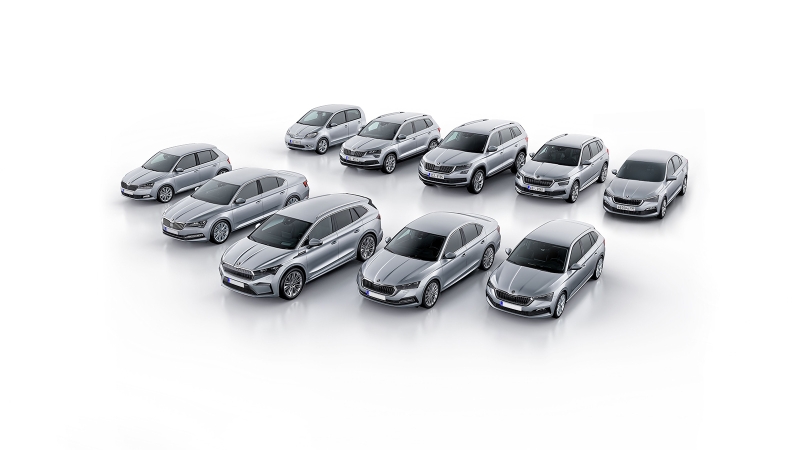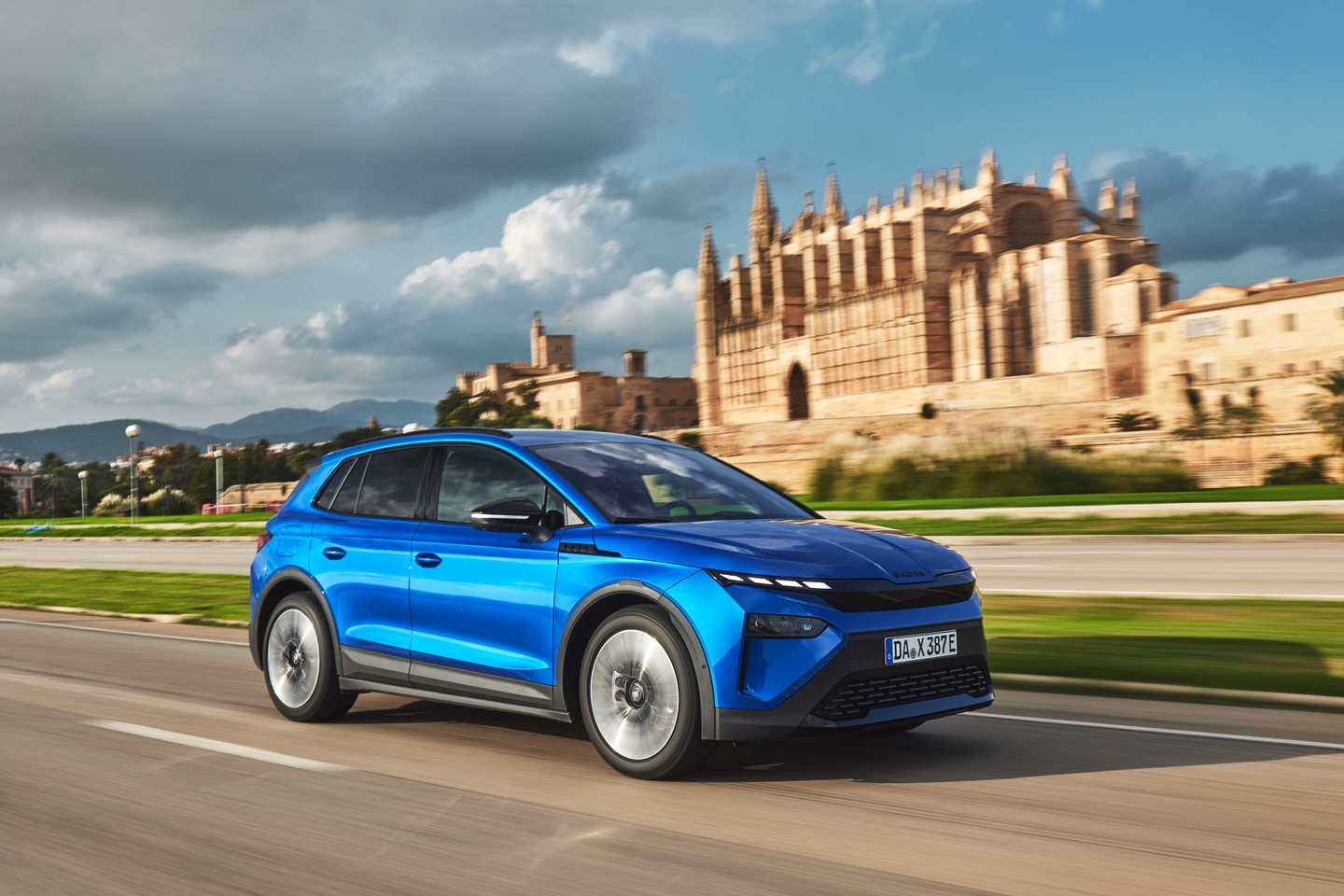
Skoda Enyaq range, driving and performance
Gallery
How does the Skoda Enyaq drive?
The Skoda Enyaq drives with the solid, reassuring competence that we’ve experienced in other Skodas. It’s satisfying rather than fun, but there’s next to no body roll and a good balance between direct steering and a mostly comfortable ride.
First and foremost, the Enyaq is a seriously relaxing car to drive. It’s like it does some of the thinking for you. All cars have front assist, which can keep you from getting too close to the car in front, while the intelligent speed assist function takes the job of changing your speed to match the limit away. It sounds intrusive, but usually works as you’d hope.
Usually. None of these systems are perfect, and the Skoda has, on occasion, slowed down on the motorway if it thinks you’re going off the adjacent slip road and approaching a roundabout. A quick poke of the accelerator overrides the computer, and you go on your way. Similarly, the lane-keep system is useful but, on narrower roads, the system is constantly tugging the wheel as the Enyaq feels quite wide.
Stick the Enyaq into ‘B’ mode and the brake regeneration ramps up, allowing you to almost drive exclusively using just the accelerator. It quickly becomes natural, even if you’re not used to driving electric cars, and it makes round-town driving a piece of cake. On faster roads it’s confident and secure while, on the motorway, it’s blissfully quiet. In other words, take whichever route you fancy and the Enyaq will impress.
Is the Skoda Enyaq comfortable?
With its heavy batteries, you might expect the Enyaq to thunk into potholes and impacts. But it’s as comfortable as it is quiet. It’s leagues softer than the Tesla Model Y, and deals really well with broken asphalt and undulating surfaces. The ride quality makes the Enyaq feel expensive.
Our test car wore the same 21-inch wheels as the car in our pictures, which are the largest available. These definitely make impacts more noticeable, both in terms of feel and sound, but it’s still not uncomfortable. We’d hunt out a model with smaller wheels if you really value a pillowy soft ride – not to mention cheaper tyres considering the 21s cost nearly £400 per tyre.
What’s the best engine to get?
Pre-2024 cars come with either a 58kWh or 77kWh battery. Badged 60 and 80 respectively, they return up to 255 miles and 336 miles – or slightly less if you choose the four-wheel drive that’s available on the big battery.

In our time with the Enyaq, we’ve managed a long-term efficiency figure of 3.5 miles per kWh. That’s not far off Skoda’s official figure of four miles per kWh, even on the big wheels and with a lot of motorway driving. On the right road, it’s easy to beat Skoda’s figure. We’ve consistently seen around 200 miles from a full charge, dropping 20 miles or so in cold weather and increasing by a similar amount in warm conditions. With a bit of planning, even the 60 model could be your main or only family car.
Insurance is surprisingly reasonable, with the 60 sitting in group 23 out of 50 and the 80 only three groups higher. That’s the same as a high-spec Nissan Qashqai. Comparatively, the Toyota bZ4X starts in group 35 and the Tesla Model Y starts in a sky-high group 46!
In 2024, the 60 battery was replaced by a 50 model, which has a slightly smaller 52kWh battery and a slightly smaller 234-mile range. The 80’s 77kWh battery has been upped to 82kWh for a new maximum range of 358 miles.
Skoda Enyaq performance
If high-speed thrills are a must, there are… better choices than the Enyaq. The range-topping vRS is the most powerful and fastest, with up to 340hp and a 0-62mph time of just 5.2 seconds, but it’s not the sportiest SUV. It’s still relaxing but with more urgency and sharper styling.
The standard Enyaq has plenty of power for a family SUV. It’s no Tesla off the line, but it still gives you that instant electric-car burst of acceleration. 0-62mph takes under nine seconds but it feels quicker than that in real life, and it’s quick enough to zip through gaps in busy traffic or to get up to motorway speeds. Chances are, if you’re used to petrol and diesel cars, it’ll initially feel like a spaceship in comparison.




















































